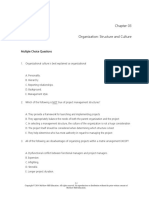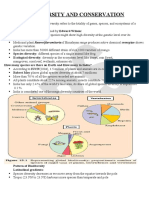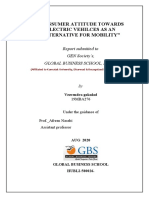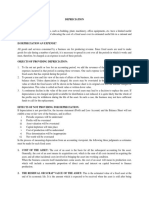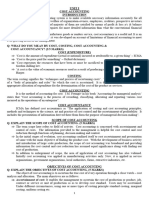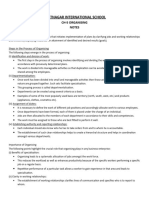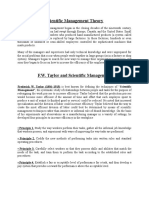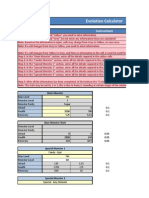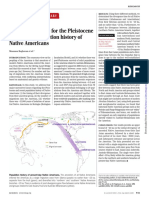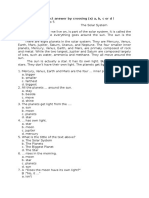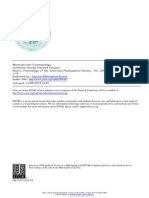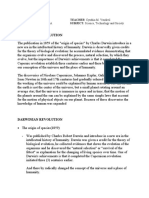Module-III: Indian Knowledge System
Module:III
Introduction:
This module explains how ancient Indians developed mathematics and astronomy, and
how their discoveries are still useful today. It shows clearly how these ancient teachings
help us understand math, space, stars, calendars, and science better.
By studying this module, we will learn:
How ancient Indian mathematicians solved problems clearly.
How ancient Indian astronomy helps us measure time and understand space.
Why ancient Indian methods are important even today.
This knowledge helps us clearly respect and appreciate India's valuable contribution to
world knowledge, and use it practically in everyday life and education.
A) Indian Mathematics:
1. Great Mathematicians and Their Contributions:
Ancient Indian mathematicians like Aryabhata, Brahmagupta, Bhaskara gave
important discoveries like Zero, Algebra, and Pi (π).
Real-Life Benefit: Helps us easily solve math problems and understand numbers
clearly.
Example: We use “zero” in calculations daily like 10, 100 clearly because of these
mathematicians.
2. Arithmetic Operations:
Ancient Indians developed clear ways to add, subtract, multiply, and divide.
Real-Life Benefit: Helps us count money, buy things, and calculate daily clearly.
Example: Easily buying groceries or calculating school marks using arithmetic.
3. Geometry (Sulba Sutras, Aryabhatiya-bhasya):
11
� Module-III: Indian Knowledge System
Ancient Indians clearly knew geometry to build houses, temples, and design
cities.
Sulba Sutras clearly taught how to measure land, build shapes, and solve puzzles.
Real-Life Benefit: Helps engineers, builders, and designers even today clearly.
Example: Building houses, roads, and bridges using geometry principles clearly.
4. Value of Pi (π):
Ancient Indians clearly found Pi (π = 3.14) to measure circles accurately.
Real-Life Benefit: Useful for measuring round shapes and objects clearly.
Example: Measuring wheels, pipes, or circular playgrounds clearly using π.
5. Trigonometry:
Ancient Indians clearly discovered trigonometry to measure angles and sides of
triangles.
Real-Life Benefit: Helps architects, surveyors, engineers clearly measure heights
and distances.
Example: Measuring height of a building or mountain clearly using trigonometry.
6. Algebra:
Ancient Indians clearly taught algebra to solve complex problems using symbols
and letters.
Real-Life Benefit: Useful in solving daily problems, budgeting, and calculations
clearly.
Example: Finding unknown numbers clearly, like “If 2 apples cost ₹10, what is the cost
of 5 apples?”
7. Chandah Sastra of Pingala:
Pingala taught clearly about patterns, sequences, and counting combinations.
Real-Life Benefit: Useful in music, poetry, computer science, and counting
possibilities clearly.
12
� Module-III: Indian Knowledge System
Example: Understanding patterns like in rangoli designs or rhythms in music clearly.
B) Indian Astronomy:
1. Celestial Coordinate System:
Ancient Indians clearly measured stars and planets using coordinates in space.
Real-Life Benefit: Helps astronauts, sailors, travelers clearly find directions and
locations.
Example: Clearly knowing directions like North and East from stars.
2. Elements of the Indian Calendar:
Ancient Indians clearly created calendars based on sun, moon, and planets.
Real-Life Benefit: Helps us know dates, seasons, and festivals clearly.
Example: Clearly celebrating festivals like Diwali or Holi on correct days each year.
3. Aryabhatiya and Siddhantic Tradition:
Aryabhata clearly taught about planets, stars, eclipses, and earth’s rotation.
Siddhantic texts clearly gave precise rules for astronomy calculations.
Real-Life Benefit: Helps scientists and astronomers study space clearly today.
Example: Predicting eclipses and understanding why day and night happen clearly.
4. Pancanga – The Indian Calendar System:
Clearly explains five parts (days, dates, stars, months, years) of Indian calendar.
Real-Life Benefit: Helps farmers, travelers, and people plan daily activities clearly.
Example: Clearly choosing correct times for farming, festivals, marriages using
Panchanga.
5. Astronomical Instruments (Yantras):
Ancient Indians clearly made instruments to observe stars and planets.
Real-Life Benefit: Helps scientists clearly observe and study space today.
13
� Module-III: Indian Knowledge System
Example: Instruments clearly measuring positions of sun, moon, planets accurately.
6. Jantar Mantar or Raja Jai Singh Sawai:
Clearly built observatories (big instruments) to measure time and space
accurately.
Real-Life Benefit: Helps us measure time, seasons, and directions clearly.
Example: Jantar Mantar in Jaipur clearly measuring exact time using sunlight shadows.
Real-Life Benefits of Learning This Module:
Clearly appreciate ancient Indian contributions to math and science.
Easily use math concepts (arithmetic, algebra, geometry) clearly in daily life.
Clearly understand time, directions, seasons using astronomy.
Solve problems clearly and practically using ancient methods.
Clearly inspire interest in science, math, and space studies.
How to Study This Module (Step by Step, Point Wise):
1. Start with Indian Mathematics Clearly:
Clearly learn arithmetic operations, zero, and value of Pi (π).
Study clearly about geometry and algebra practically.
2. Understand Contributions of Mathematicians Clearly:
Learn about Aryabhata, Brahmagupta, Bhaskara, and their discoveries.
3. Move to Trigonometry and Chandah Sastra Clearly:
Learn how trigonometry clearly helps measure heights and distances.
Study clearly patterns and sequences by Pingala.
4. Study Indian Astronomy Clearly:
Learn how ancient Indians clearly measured stars, planets, and made calendars.
5. Explore Panchanga and Celestial Systems Clearly:
14
� Module-III: Indian Knowledge System
Study Indian calendar clearly and understand directions from stars.
6. Understand Astronomical Instruments Clearly:
Study clearly instruments like Jantar Mantar and their uses today.
Final Thought:
This module clearly shows India's deep knowledge of mathematics and astronomy that
is still helpful in our daily life. Understanding these ancient concepts clearly helps us
appreciate India's contribution to science and technology today.
15







